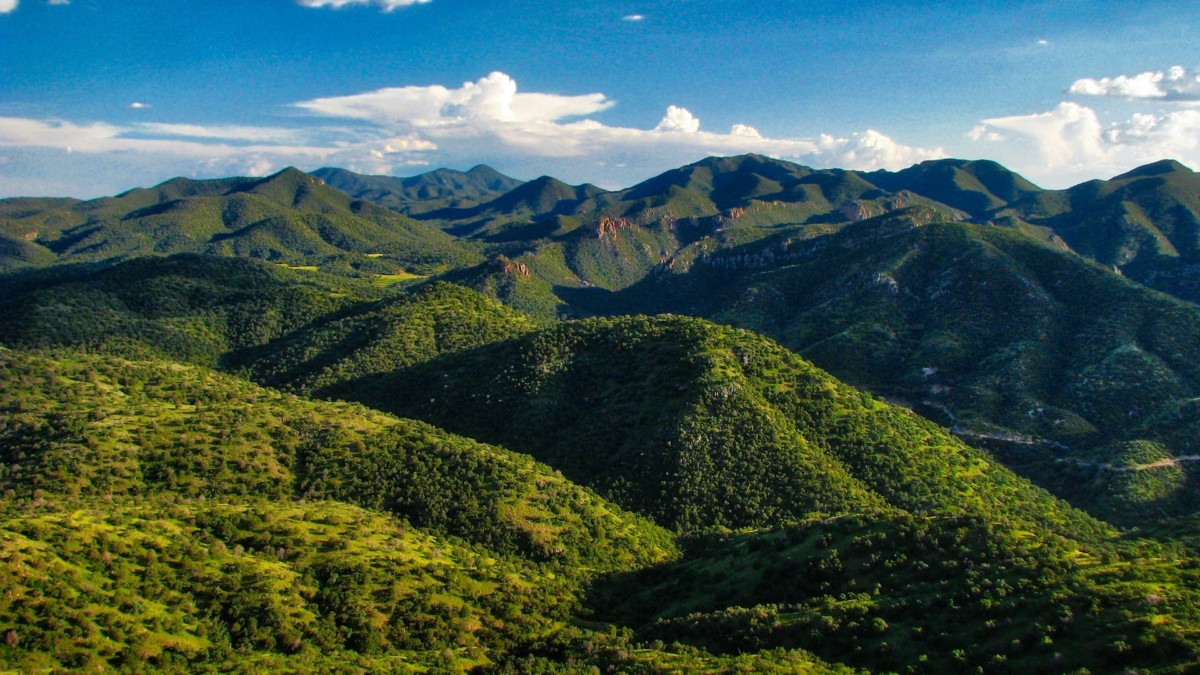
Roughly 60 miles southeast of Tucson—past Sonoita, Elgin, and Mt. Wrightson in the Santa Ritas—rests an eight-mile stretch of canyons and corridors known as the Patagonia Mountains. One of the largest transboundary Sky Island ranges, the Patagonias provide a habitat for hundreds of species of birds, like yellow-billed cuckoos, Mexican spotted owls, and hummingbirds; pollinators, including bees, butterflies, moths, and bats; and mammals, like bears, ringtails, coatimundi, white-tailed deer, and mountain lions.
The Patagonia Mountains, located on the borderlands of the United States and Mexico, are also one of the few ranges that provide migratory animals (jaguars, ocelots, and black bears, for example) a direct gateway of passage from Sonora, Mexico into the United States—although sadly, corridors like this one are now directly threatened by the border wall.
Finally, the Patagonias are home to over 100 Federally listed “special status” species, which means they require special consideration or protection and should be—or have been—added to a State or Federal sensitive, threatened, or endangered species list (source: Arizona Game and Fish).
Unfortunately, like several of our other Sky Island ranges, the Patagonia Mountains contain large deposits of metals and minerals like zinc, silver, and lead. The presence of these extractive resources has created ongoing conflict between the protection of our region’s biodiverse wildlife species and today’s high demands on minerals and metals for technology, goods, and construction.
In 2011, Patagonia Area Resource Alliance (PARA), a grassroots nonprofit located in the Town of Patagonia, formed to monitor the activities of mining companies in the Patagonia Mountains. PARA’s mission is to ensure the actions of these companies, and of local government agencies, have long term benefits for Arizona’s public lands, watersheds, wildlife, and diverse ecosystems.
This fall, PARA will be sharing with the public 50 myths the extractive industry wants people to believe. Here are four myths we at Sky Island Alliance believe apply to the Sky Island region in general, as many of our mountain ranges—including the Patagonias, Santa Ritas, and Galiuros—have active mineral, metal, and stone mining operations (source: Arizona Geological Survey).
The Myths
#1: Hardrock mining will not impact our health or the health of our wildlife.
The reality: Hardrock mining historically creates acid mine drainage that spills into our water. Once in the environment, acid mine drainage affects all living creatures and is incredibly difficult to remediate.
#2: The San Antonio exploratory drilling project, planned for the eastern side of the Patagonia Mountains and owned by junior Canadian mining company Barksdale Resources, does not need to go through an environmental impact assessment. The project is currently listed on the Forest Service website as a categorical exclusion (CE).
The reality: The San Antonio project will operate on 651 acres, a large project size. The main access route for mining traffic will go past a schoolhouse, and no impacts are listed on water or local residents. Finally, most of the information included about wildlife is nearly 20 years old. We believe this project should not receive a categorical exclusion.
#3: The mining process won’t impact the Sonoita Creek watershed (the main source of water for the Patagonia Mountains and the Town of Patagonia).
The reality: In July, South32, a senior Australian mining company in the Patagonia Mountains, announced massive dewatering plans for the Sonoita Creek watershed. These plans will draw down an estimated 1.6 billion gallons of water per year for four years in order to help them reach their target minerals—but why is this acceptable when the Forest Service currently lists the Sonoita Creek watershed as functioning at risk?
#4: Barksdale Resource’s San Antonio exploratory drilling project will not affect any of the area’s diverse and endangered species. They list these risks as low.
The reality: The yellow-billed cuckoo, a threatened species in the area that was recently allowed to retain Federal protections by the U.S. Fish and Wildlife Service, likely breeds within the proposed project limits, and nesting cuckoos have been heard and seen by various locals and survey groups.
For additional industry myths, scientific sources, and ways to help defend the wildlife in the Patagonia Mountains, check out Patagonia Area Resource Alliance’s 50 Days to Take Action campaign page.
